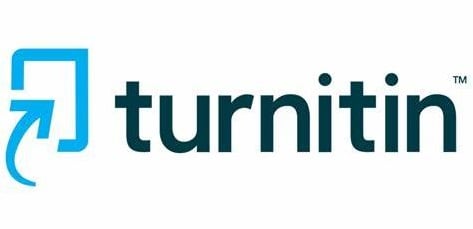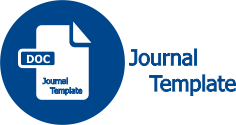Running Dictation: an Effective Strategy for Teaching Vocabulary
DOI:
https://doi.org/10.33752/discovery.v9i2.6670Keywords:
Effective Strategy, Running Dictation, VocabularyAbstract
The students’ less interest and motivation in learning vocabulary caused their poor vocabulary mastery. Therefore, the researchers were interested in conducting a pre-experimental study to know whether running dictation strategy was effective for teaching vocabulary. The population of this study was all the students of class VIII of MTs. Bahrul Ulum Genukwatu, Jombang. Then, the sample was 30 students of class VIII A. The instruments used to collect the data were pre- test and post-test of vocabulary. The students got the pre-test before the treatment conducted and the post-test after the treatment. After all the data from the pre-test and post-test were collected, the mean scores of the pre-test and post-test were calculated. It was followed by a paired-sample t- test calculation because their mean scores were different. The results showed that the mean score in the pre-test was 57 and the mean score of the post-test was 78. The sig. (2-tailed) score of the paired-sample t-test was 0.000. It means that the implementation of running dictation strategy was effective for teaching vocabulary. Thus, it is hoped that the results of this study can become a reference for the EFL teachers when teaching vocabulary.
Downloads
References
Afna, M., & Sutriani. (2018). The correlation between vocabulary and speaking skill. JL3T: Journal of Linguistics, Literature & Language Teaching, 4(1), 43–71.
Agustiani, M., & Yulia, H. (2018). Running dictation technique and learning motivation: their effects on students’ listening achievement. The Journal of English Literacy Education, 5(2), 76–83. https://doi.org/10.36706/jele.v5i2.7240
Agustin, N. T. (2022). Effect of Using The Quizizz Application on Students Vocabulary Mastery. Dialectical Literature and Educational Journal, 7(2), 96–102. https://doi.org/10.51714/dlejpancasakti.v7i2.74
Aji, H. P. A., Widodo, S., Masykuri, E. S., & Nugraeni, I. I. (2023). Students’ Problems in Building up English Vocabulary. Scripta, 10(1), 44–50. https://doi.org/10.37729/scripta.v10i1.2353
Al-Rawi, I. (2013). Teaching Methodology and its Effects on Quality Learning. Journal of Education and Practice, 4(6), 100–105.
Andayani, E. S. (2022). The importance of learning and knowing English in higher education in Indonesia. Research and Development Journal Of Education, 8(1), 372–379. https://doi.org/10.30998/rdje.v8i1.13315
Arimurti, S. (2024). Peningkatan Keaktifan Belajar Menulis Teks Deskriptif melalui Model Cooperative Learning Tipe Snowball Throwing bagi Siswa MTs Negeri 8 Kebumen. DISCOVERY: Jurnal Ilmu Pengetahuan, 9(1), 17–30. https://doi.org/10.33752/discovery.v9i1.5811
Arina, S. (2024). Study of student’s perception in learning vocabularies through Budi Harjo’s challenge at tik tok. DISCOVERY: Jurnal Ilmu Pengetahuan, 9(1), 31–39. https://doi.org/10.33752/discovery.v9i1.5884
Bai, Z. (2018). An analysis of English vocabulary learning strategies. Journal of Language Teaching and Research, 9(4), 849–855. https://doi.org/10.17507/jltr.0904.24
Dakhi, S., & Fitria, T. N. (2019). The Principles and the Teaching of English Vocabulary. JET: Journal of English Teaching, 5(1), 15–25. https://doi.org/10.33541/jet.v5i1.956
Destiana, M., Ys, S. B., & Inayah, N. (2019). The Use of Running Dictation Technique to Improve Students’ Listening Skill. Research in English and Education (READ), 4(1), 32– 38.
Fitriyah, L. (2021). The use of an alternative assessment for undergraduate students. DISCOVERY: Jurnal Ilmu Pengetahuan, 6(2), 66–75. https://doi.org/10.33752/discovery.v6i2.1794
Hasan. (2018). Improving Students English Vocabulary by Using Tic Tact Toe Game at The second Year of SMP Negeri 7 Satap Maiwa Kabupaten Enrekang. EDUMASPUL: Jurnal Pendidikan, 2(2), 77–86.
Hidayati, F., Nurmala, E., & Zulfa, W. (2020). The Influence of Running Dictation Method on Students’ Descriptive Text Writing Ability (A Quasi-Experimental Research at 10th Grade Students of SMA Negeri 1 Jalancagak, Subang). Jurnal Bahasa Inggris Terapan, 6(2), 120–130.
Indah, O. D. (2019). Students’ perception on running dictation method in ESP classroom. DEAS Journal on English Language Teaching and Learning Linguistics and Literature, 7(1), 16–24. https://doi.org/10.24256/ideas.v7i1.715
Isadaud, D., Fikri, M. D., & Bukhari, M. I. (2022). The urgency of English in the curriculum in Indonesia to prepare human resources for global competitiveness. DIAJAR: Jurnal Pendidikan Dan Pembelajaran, 1(1), 51–58. https://doi.org/10.54259/diajar.v1i1.177
Jawad, Z. A. (2020). Running Dictation Technique for Promoting EFL Primary Pupils’ Spelling, Pronunciation & Vocabulary Retention. Al-Ustath Journal for Human and Social Sciences, 59(4), 75–88.
Jaya, H. P., Pitaloka, N. L., & Wijaya, A. (2020). Running dictation to develop students’ listening comprehension ability. IRJE: Indonesian Research Journal in Education, 4(2), 543–555. https://doi.org/10.22437/irje.v4i2.10907
Jumasih. (2021). Literature Study: The Influence of Learning Interest on Student Achievement. HUMANIS: Humanities,Management and Science Proceedings, 4(1), 1386– 1392.
Lekawael, R. F. J., Lie, A. F., & Pesiwarissa, R. (2024). The Implementation of Running Dictation Strategy to Improve Students’ Vocabulary in Grade VIII at SMP Negeri 9 Ambon. INNOVATIVE: Journal Of Social Science Research, 4(2), 3441–3453.
Manda, S., Talib, A., & Aeni, N. (2022). Improving Students’ Vocabulary by Using Show and Tell (S&T) Method at the First Grade Students of SMA Negeri 6 Toraja Utara. Journal of Excellence in English Language Education, 1(4), 310–316.
Naniwarsih, A., & Mulyadi, E. (2022). Implementation of running dictation to increase reading comprehension in English expression. Journal of Foreign Language and Educational Research, 5(2), 1–11.
Puspitarini, Y. D., & Hanif, M. (2019). Using Learning Media to Increase Learning Motivation in Elementary School. Anatolian Journal of Education, 4(2), 53–60. https://doi.org/10.29333/aje.2019.426a
Rashid, M. H., Lan, Y., & Hui, W. (2022). The importance of vocabulary in teaching and learning in applied linguistics. Linguistics and Culture Review, 6(S2), 541–550. https://doi.org/10.21744/lingcure.v6nS2.2177
Schmitt, N., & Schmitt, D. (2020). Vocabulary in Language Teaching. Cambridge University Press.
Silalahi, T., & Pratiwi, Y. (2021). The usage of running dictation method to improve the students’ writing ability. Bilingual: Jurnal Pendidikan Bahasa Inggris, 3(1), 21–30. https://doi.org/doi.org/10.36985/jbl.v3i1.256
Yanuarti, H., & Rosmayanti, D. (2019). The relationship between students’ motivation and their learning achievement. PROJECT: Professional Journal of English Education, 1(6), 783–788. https://doi.org/10.22460/project.v1i6.p783-788
Yolanda, D. (2019). The effect of running dictation method on students’ writing ability in procedure text ( a study at the XIth grade students of SMS Negeri Padangsidimpuan).Jurnal Liner, 2(3), 40–56.
Zakiyah, I. S., & Husniah, R. (2017). The Effect of Running Dictation Towards Students Spelling in Writing Short Functional Text at SMP Islamic Qon. Journal of English Teaching, Literature, and Applied Linguistics, 1(2), 22–28.
Downloads
Published
How to Cite
Issue
Section
License
Copyright (c) 2024 Inaya Zada Shafara, Mukminatus Zuhriyah

This work is licensed under a Creative Commons Attribution-ShareAlike 4.0 International License.

















